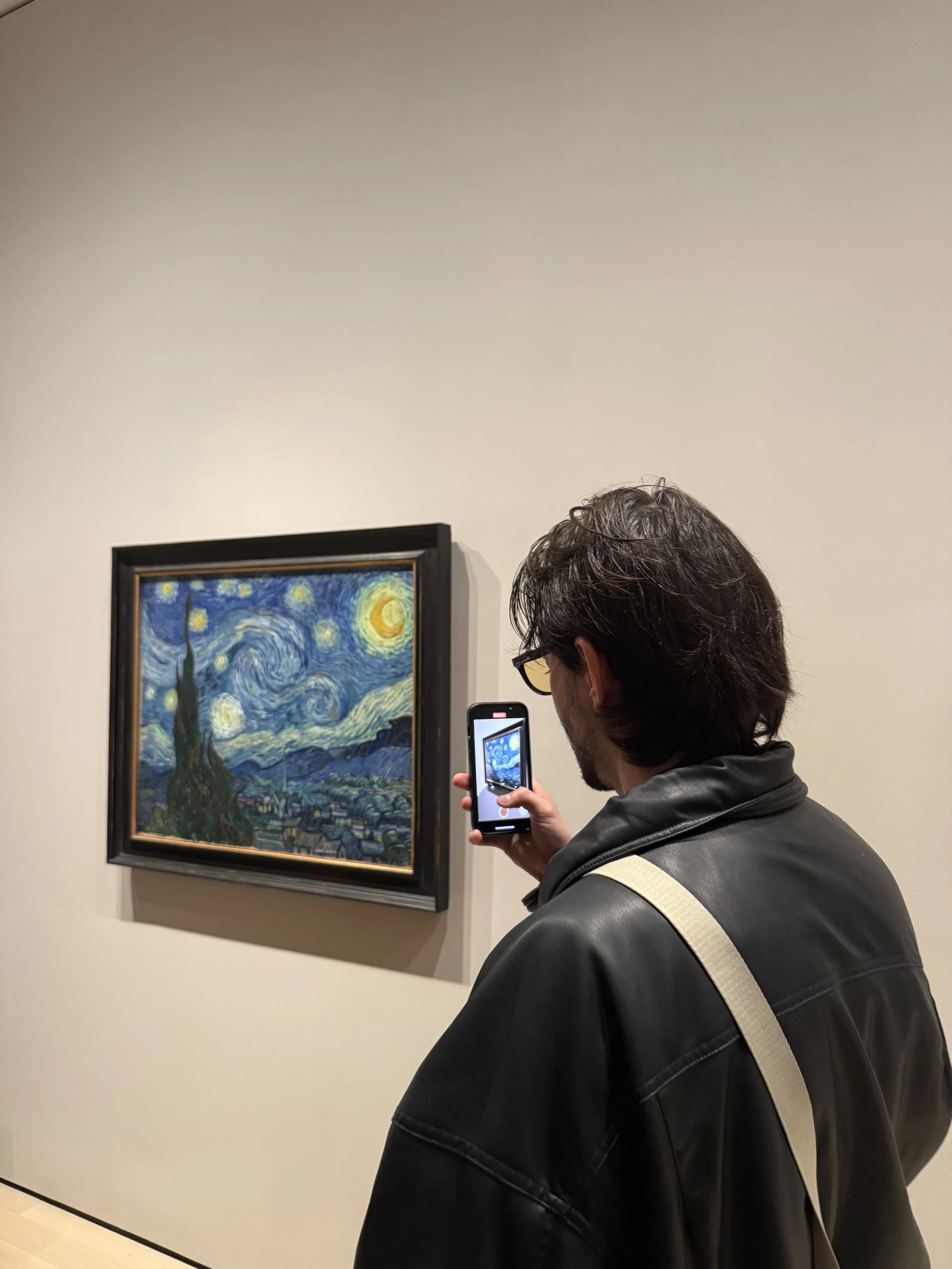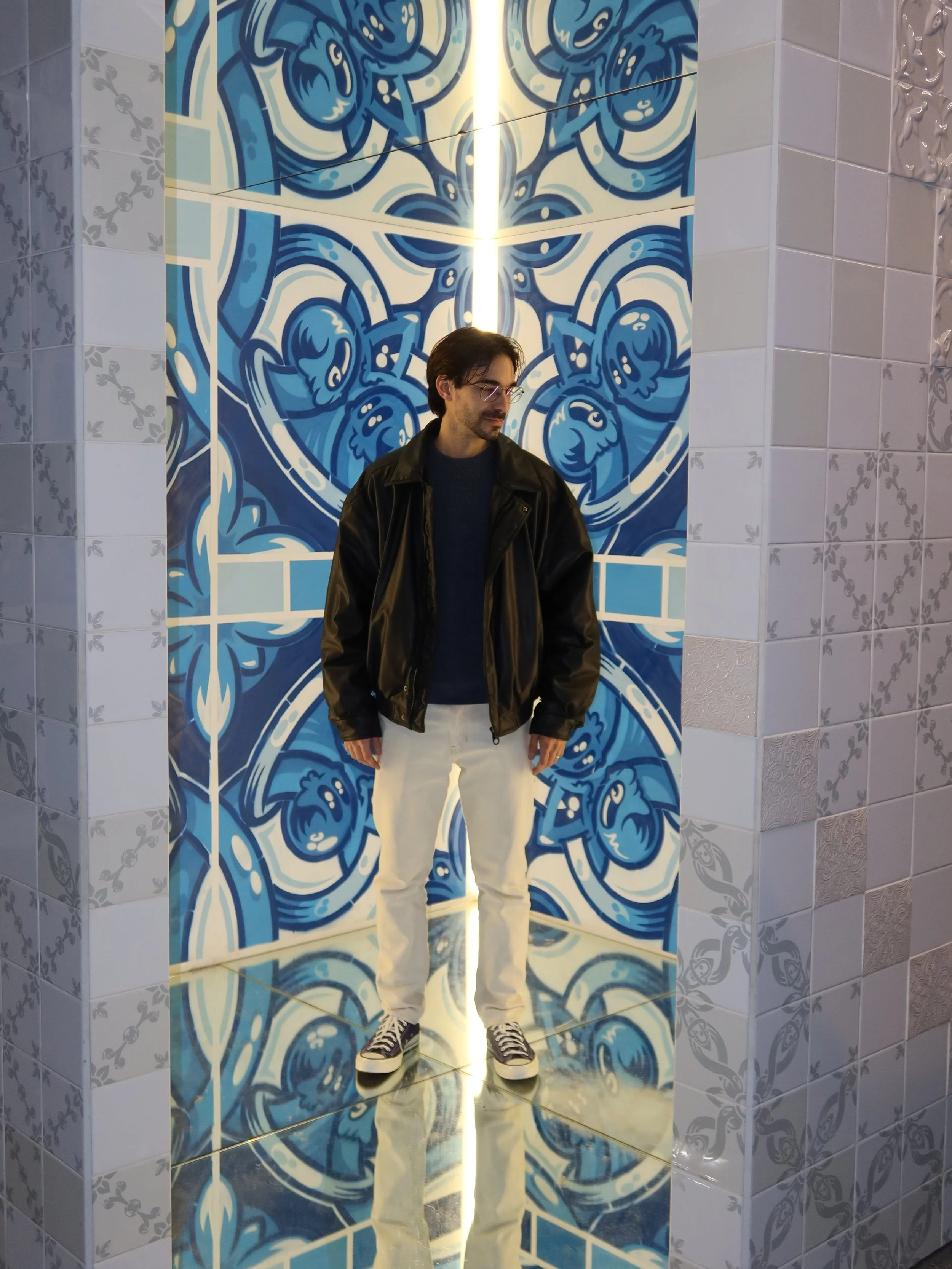In the Presence of Greatness: The Artworks That Moved Me to Tears
Some people cry in front of movies. Others in moments of prayer. For me, it happens—rarely, but profoundly—when standing in front of a work of art. Not just any art, but something that reaches across time, space, and intention to connect with me in a way that feels inexplicable. And when it does, I remember why I paint.
These moments are few and far between. But over the past few years, I’ve had five powerful emotional experiences inside museums. They’ve changed me, not just as an artist, but as a person learning how to feel more deeply and understand the weight of history.
Rome, November 2021 — The Sistine Chapel and The School of Athens
It was my birthday. I was traveling with my brother, Fonzo Romano, to Rome. At the time, I had just started to explore oil painting. Most of my art practice had been quick watercolors and digital sketches for social media. We hadn’t planned to visit the Vatican Museums, but on a whim, we went—and my life changed.
The moment I stepped into the Sistine Chapel, something shifted. The scale, the detail, the weight of it all. Michelangelo’s ceiling stretches over 500 square meters and took four years to complete, lying on scaffolding, painting above his head. But it’s not just the labor that moved me—it was the vision, the total dedication to an idea.
Nearby, Raphael’s The School of Athens also stunned me. The way he blended philosophy and humanism into a fresco made me understand what it meant to create timeless work. I left that museum different. Until then, I had been calling myself an artist. That day, I stopped. I understood I wasn’t even close to deserving the title. But I knew I wanted to try.
Paris, 2023 — Musée d'Orsay and “Van Gogh in Auvers-sur-Oise: The Final Months”
Two years later, on a work trip to Paris with Central Models, I found myself with one free morning. I couldn’t get tickets to the Louvre, so I booked a last-minute visit to the Musée d'Orsay. I didn’t know what I would find.
By pure coincidence, that day marked the opening of Van Gogh in Auvers-sur-Oise: The Final Months. At this point, I had already painted many portraits, deeply inspired by Van Gogh’s brushwork and emotional intensity. When I entered the room and saw Self-Portrait (1889)—the one with the piercing blue background—I froze. It was small, just 44 x 37 cm, but it hit me with the force of a wave.
This was a painting he created shortly before his death, while staying in the Saint-Rémy-de-Provence asylum. His stare was haunting, vulnerable, and so deeply human. I cried. I was alone, but in front of that self-portrait, I felt recognized by someone I had never met. A man who never saw success in his lifetime but who never stopped painting. He had fought for his dream. So was I.
Tokyo, 2023 and 2024 — teamLab Planets and teamLab Borderless
Japan holds a special place in my heart. I visited twice, and both times, I ended my trips with immersive art experiences by teamLab. In March 2023, I went to teamLab Planets in Tokyo. In November 2024, I visited teamLab Borderless.
Both visits came after long months of intense work. I was exhausted and mentally drained. But Japan, with its time difference and slow rhythm, gave me the gift of stillness. At teamLab, surrounded by light, sound, and scent, I felt peace in a way I hadn’t in years. These weren’t millennia-old paintings, but they were revolutionary in their own right: the beginning of a new era in art. One that speaks to the body, not just the eyes.
Me and my wife scheduled our visits for the last day of each trip. Both times, it felt like a reset—an emotional reminder of what art can do beyond the canvas. A reminder that art lives in the air, in silence, in movement.
Paris, July 2025 — The Louvre and the Unexpected Da Vinci
Last weekend, I went back to Paris. This time, I was prepared. I had studied art history more seriously, and I was determined to finally see the Mona Lisa in person. I had set my expectations: the room would be crowded, the painting small, the experience rushed.
And it was. But what I didn’t expect was what I saw just moments before.
In a quieter room just before the gallery of the Mona Lisa, I came across four paintings I recognized immediately by their tone and composition. Leonardo da Vinci. I rushed toward the smallest one—La Belle Ferronnière (c. 1490), also known as Portrait of a Lady from the Court of Milan. A true oil painting by Leonardo, done in sfumato with delicate transitions and subtle emotion.
I approached. No crowds. No glass barrier. Just me and her. Her gaze, painted over 500 years ago, held me. A tear rolled down my cheek.
I didn’t cry in front of the Mona Lisa. I tried. But I couldn’t feel the same intimacy. The room was too crowded. The glass too thick. I stood in line, took a photo, and left. But then I returned—to La Belle Ferronnière. That was my real moment with da Vinci. That was where I felt the centuries collapse.
Why These Moments Matter
I visit a lot of museums. I love them. But I don’t always get emotional. That kind of connection is rare.
Still, I believe that everyone—not just artists—should walk into a museum from time to time. We live in a world of fast images and infinite scrolls. But a museum forces you to slow down. It teaches you the value of stillness, of time, of silence. You stand in front of something made by human hands hundreds of years ago—and somehow, it speaks.
These tears I’ve cried in Rome, Paris, and Tokyo aren’t just about admiration. They are about connection. About seeing yourself in something that was never meant just for you, but somehow reaches you anyway.
If you haven’t had that moment yet, go find it. It might be waiting for you in a quiet gallery, in the eyes of a painted stranger, or in a room filled with lights and water. Art, in all its forms, is still one of the few things that can stop time.











